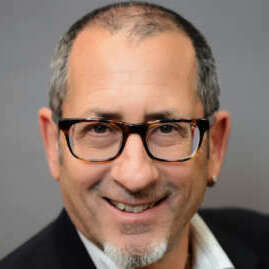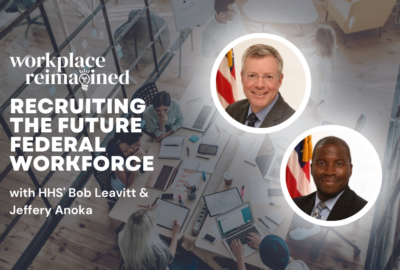Insight by ATD
Workplace Reimagined 2023: ATD’s Rocki Basel on 3 talent development strategies for hybrid workforce
To create a consistent culture for your employees — whether in the office or remote — depends on more than ice creams socials, explains a research expert with...
The hybrid workplace is here to stay. The challenge for organizational leaders and talent development teams has become how to build a strong organizational culture across a scattered workforce.
“You can offer ice cream for a day, and it may make people happy in the moment. But that does not necessarily mean that it’s going to create that long-term workplace culture that engages employees,” Rocki Basel, associate director of research at the Association for Talent Development (ATD).
Fortunately, by adopting three strategies, talent development and human resources managers can ensure a culture that both remote and in-office employees see as positive. These strategies don’t involve ping-pong tables or ice cream socials, Basel told Federal News Network during Workplace Reimagined 2023:
- Talent development Strategy 1: Focus on employee well-being.
“That could be looking at your benefits that you offer,” Basel said. “That could be thinking about things like the flexibility that people have in their schedule.”
In other words, be sure to look at the organization from the employees’ point of view.
- Talent development Strategy 2: Communicate the importance of workplace culture itself.
Too often, HR or talent development staffs survey employees on organizational health issues, “and nobody ever does anything with that survey.”
Basel said an ATD survey of its own members found that 60% of hybrid and remote talent development professionals “said that their senior leaders and executives do communicate about the importance of workplace culture. They’re measuring and they’re communicating that importance, and they’re talking about it, and they’re making plans to make improvements.”
- Talent development Strategy 3: Don’t overlook training and onboarding.
Basel recommended “talent development professionals think about the positive impact they can have through training and onboarding. Organizations really need to think about upskilling and reskilling their employees.”
An intentional onboarding program, she added, aids culture when new people start with a positive experience.
Make your training hybrid too
Recent research showed that nearly nine in 10 organizations have adopted training models that use the common video conferencing platforms, Basel said. Virtual instructor-led training, ATD members say, “is effective at meeting their learning goals,” she said. “It’s an easy way to implement training, and it’s also easy for the end user to use.”
Besides live online training, ATD members also can access self-paced, asynchronous e-learning. Employees “can do training during times that work for them,” Basel said. “We found that high-performing organizations tend to be using asynchronous e-learning.”
Such training, regardless of format, will help organizations fill gaps in workforce skills, she added.
Research ATD conducted in 2022 showed that 65% of organizations report their teams need to improve critical thinking, problem-solving, communications and interpersonal skills.
“Over half of our respondents said that they’re seeing a gap in manager and supervisory skills, a little less than half said that they’re seeing leadership and executive-level skill gaps,” Basel said.
She added that talent development and human resources might be the primary functions responsible for fixing those gaps, but efforts to do so should derive from a careful evaluation of an own organization’s particular situation.
Baseline your agency’s talent development
Basel said ATD plans to release an e-book later this year on modernizing the federal workforce.
“It’s going to talk about hiring and developing and retaining top talent in the federal workforce,” Basel said. The e-book will include information on ATD’s Talent Development Capability Model. She described the model as “a research-based framework that outlines what talent development professionals need to know and how to be successful.” The model covers the domains of personal, professional and organizational capabilities.
In government and public administration, Basel said, managers tend to rate themselves as highly skilled in lifelong learning, communication, training and upskilling. But they regard themselves as needing work in technology, such as data and analytics skills.
In all, the Talent Development Capability Model covers 23 specific capabilities. Basel urged agencies to use the model to develop job descriptions to better pinpoint skills gaps and recruitment.
“Talent development departments can use this to establish terminology and make sure that we’re all using the same definitions and that we’re all talking about the same things within talent development.”
To watch and read more from 2023 Workplace Reimagined, visit our event page.
Copyright © 2024 Federal News Network. All rights reserved. This website is not intended for users located within the European Economic Area.
Related Stories
Featured speakers
-

Rocki Basel
Associate Director, Research, ATD
-

Tom Temin
Host, Federal Drive, Federal News Network
Upcoming Events
Related Stories
Top Stories

Rocki Basel
Associate Director, Research, ATD

Tom Temin
Host, Federal Drive, Federal News Network
Tom Temin has been the host of the Federal Drive since 2006 and has been reporting on technology markets for more than 30 years. Prior to joining Federal News Network, Tom was a long-serving editor-in-chief of Government Computer News and Washington Technology magazines. Tom also contributes a regular column on government information technology.






